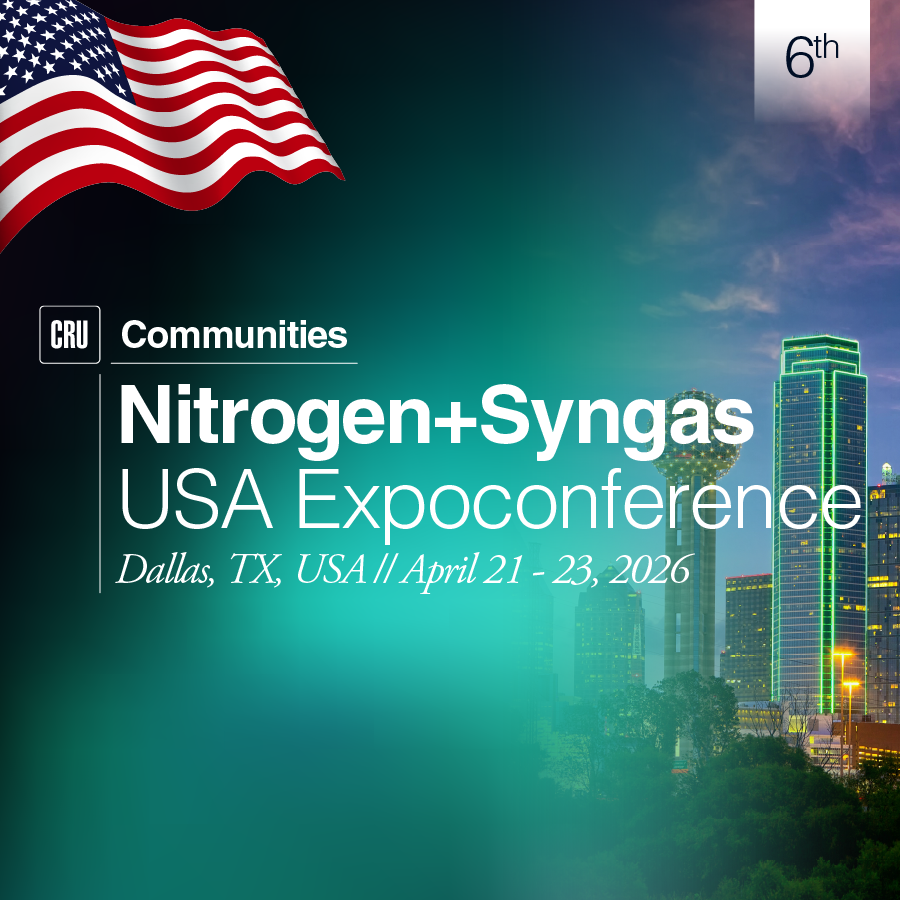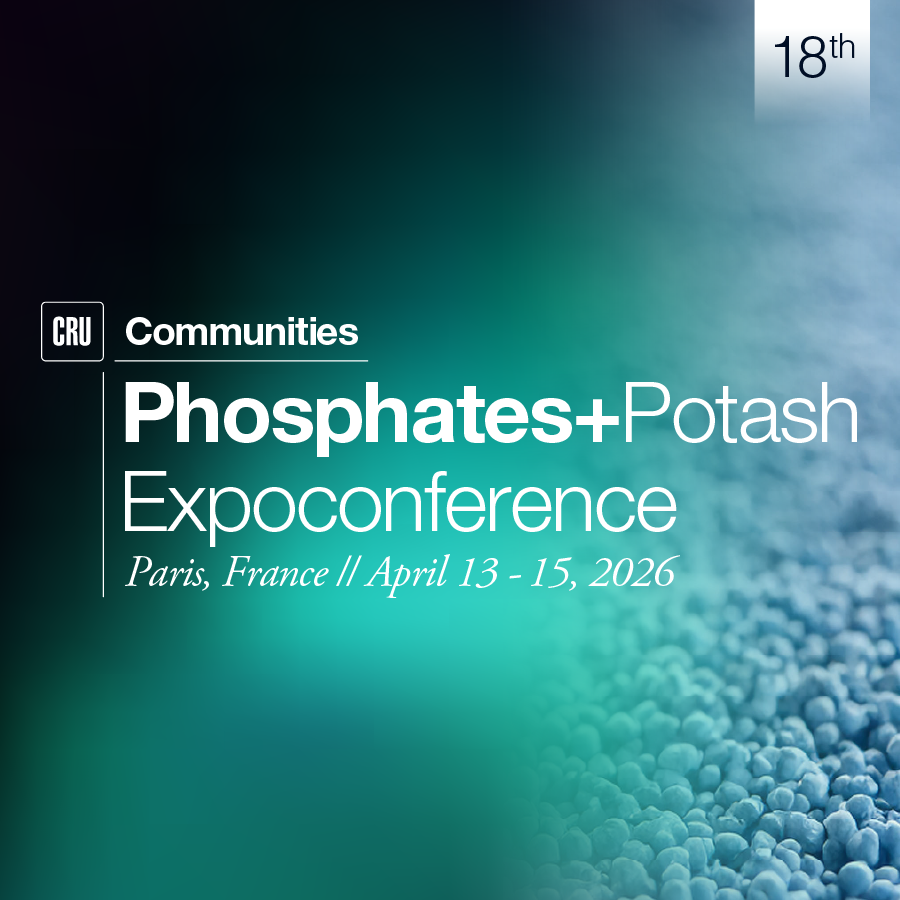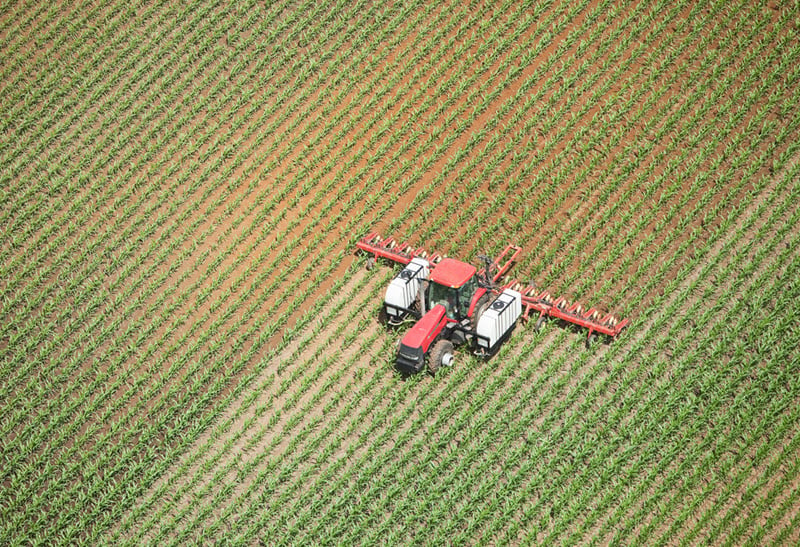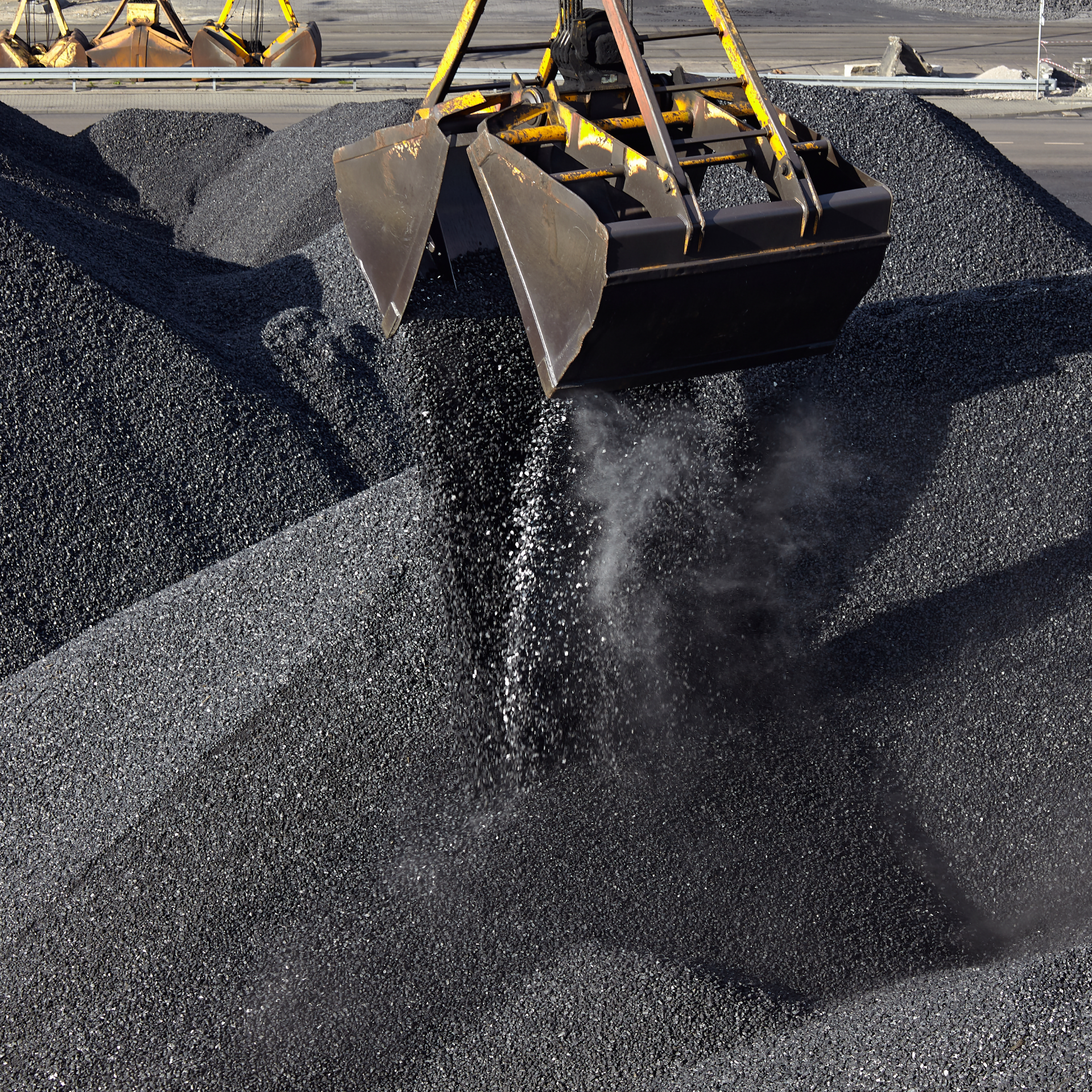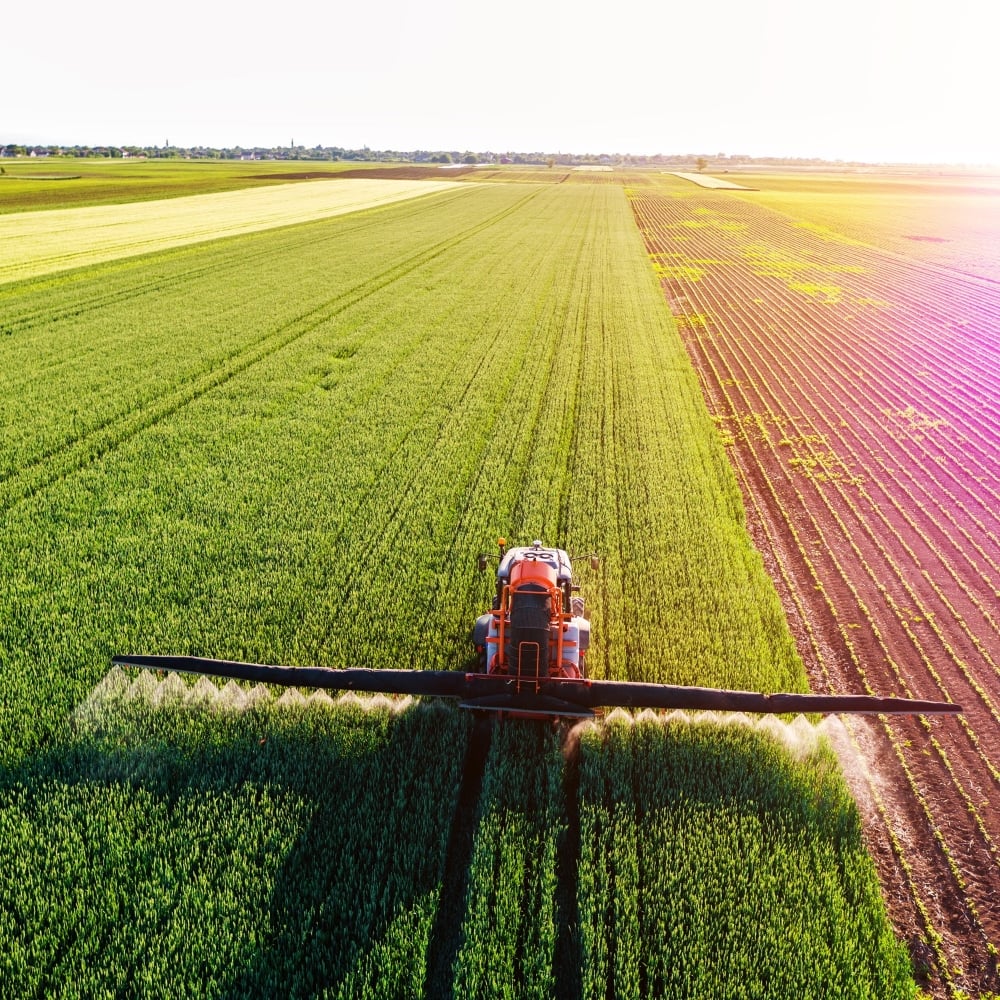International fertilizer producers have had to come to grips with a bear market since 2011. Falling market prices in the face of ongoing capacity additions have applied significant pressure to producers’ margins.
While there are now price signals that the market is turning a corner, margins remain under strain. Some proactive producers have used this market pressure to justify a redefinition of their market strategies in fundamental ways with the objective of protecting margins and securing future growth.
Intensification of competition has encouraged some producers to innovate and to integrate vertically
Fertilizer capacity expansions have significantly exceeded demand growth across nitrogen, phosphate and potash markets between 2010 and 2018. Relatively high fertilizer prices in the preceding years attracted a wave of investment, pushing all three markets into over-supply and depressing global operating rates. The effects have played out in fertilizer prices: a simple aggregate in real terms of urea, DAP and potash market prices points to a 44% decline in fertilizer prices between 2011 and 2016.
Over the same five-year period, production costs have remained approximately flat according to an index of labour, power and consumable costs in major producing regions which based on data from the CRU Economics team. However, costs have been fluctuating and growing strongly, in particular since 2016. Indeed, the increase in fertilizer market prices since 2016 can to a large extent be attributed to cost inflation in marginal supply regions rather than a sudden improvement in the global market balance.
The squeeze on margins that has resulted from these market dynamics has encouraged producers to re-examine their market strategies and to innovate to survive an intensified level of competition. At CRU Consulting we have observed first-hand and worked with producers in their quest to reclaim lost margins in creative ways.
In some cases the focus has been on reviewing their product offering; there has been increased attention paid to specialty fertilizers in particular. This can be viewed as an opportunity to harness existing mineral resources to produce higher value products. CRU Consulting has worked with a number of producers to review entry opportunities in a range of these markets including NPKs, NP+S and soluble fertilizer products. The effects of this trend are immediately visible from the product offerings of the major fertilizer producers. Product portfolios previously focused on DAP, MAP and TSP have now expanded to include a broad range of NPK formulations, many including trace elements, intended for specific crops or soil types.
Some other producers have used the downturn to re-examine how they supply their customers. Faced with intensified supply competition, many leading fertilizer producers are pursuing a vertical integration strategy in a bid to secure market share and gain access to margins across the value chain. Their decision to integrate vertically is motivated both by the perceived risk of being locked out of key growth markets and by a range of perceived benefits associated with controlling the value chain as close to the consumer as possible.
Major fertilizer producers are actively establishing distribution capabilities in key overseas markets to secure access to future market growth
Yara may be considered a market leader in pursuit of both of these strategies on a global scale. Over decades it has armed with an extensive portfolio of nitrogen and multi-nutrient fertilizers and a broad-based geography of production assets. For the company this has justified a vertical integration strategy through which it takes responsibility for distributing and marketing its own products. The company now operates through over 80 sales offices in over 60 countries worldwide. In Europe the company pursues a highly farmer-centric marketing strategy which enables it to distribute its products using data to segment both farmers and crops.
North America’s newly-formed Nutrien is another notable leader when considering vertical integration strategies. Indeed, the benefits of a vertically integrated fertilizer supplier can be viewed as a core motivation for its formation through the January 2018 merger of PCS (with a focus on fertilizer production) and Agrium (with extensive distribution and retail capabilities). The company now produces a range of nitrogen, phosphate and potash fertilizers from its North America home market with extensive distribution capabilities in the strategically important North and South American markets and retail operations in both the USA and Australia.
While a market strategy on the scale of Yara and Nutrien evidently can take decades to establish, the last 5 years have evidenced major fertilizer producers expanding their international distribution capabilities through vertical integration. A number of these companies have traditionally focused on producing commodity-grade fertilizers and while in many cases they maintain distribution capabilities within their home market, export sales have been dominated by spot sales on an FOB basis to traders and other buyers.
The extent of the more recent vertical integration strategies pursued by major fertilizer exporters has varied from developing maritime freight capabilities (enabling producers to sell cargoes on a CFR basis) all the way down to acquiring or establishing fertilizer distribution or retail capabilities in overseas markets. In between the two, some producers have opted to establish local sales offices and warehousing in key overseas markets.
Mosaic’s overseas vertical integration strategy has been focused on the South America market. Through its 2014 acquisition of ADM’s fertilizer distribution assets and its 2018 acquisition of Vale’s fertilizer assets, the company gained a valuable stronghold in one of the world’s largest and fastest growing markets.
Russian producers have been particularly active in pursuing such strategies in recent years. EuroChem has led the way through a series of acquisitions of distribution assets in Europe, the USA and Brazil. PhosAgro has been active in this area too, but instead opting to grow organically by establishing and developing its own sales and marketing presence in Europe and in South America. Acron’s interest in Petrobras’ Brazilian fertilizer assets and UralChem’s January 2019 announcement of an agreement with the Zimbabwean government to invest in the country’s fertilizer industry signify that other major Russian producers are reviewing strategies which could entail some degree of vertical integration in to key overseas markets.
Faced with the challenge of how to market its rapidly expanding phosphate fertilizer capacity, Morocco’s OCP has also been highly active in the pursuit of its own vertical integration strategy. Having developed its sales and distribution capabilities across the Atlantic in both the major US and Brazilian markets, OCP has more recently focused its vertical integration efforts on an ambitious expansion in the African market – a market recognised for its tremendous growth potential. Plans to build out fertilizer production capacity including in Ethiopia have been preceded by the rapid expansion of its agronomic services, sales and distribution capabilities in individual country markets across the continent of Africa.
Securing volume and value across the chain is viewed as a key objective in the pursuit of vertical integration
The key objectives of these vertical integration strategies are to capture access to market volume as well as value along the fertilizer value chain by establishing a competitive advantage over other suppliers. The strategy can also be viewed as a mitigating action against the volume and price risks which have intensified since 2011. Securing volumes is particularly attractive to exporting producers considering the extent of the supply expansion in recent years. More tonnes from more suppliers are competing for key markets.
Vertical integration necessitates the development of distribution and marketing capabilities along the fertilizer supply chain. Becoming active at each stage along that chain can unlock new sources of value to the producer. Of greatest importance is the increased access to potential customers and sales opportunities. Consider an incumbent producer whose fertilizer exports take place solely on an FOB basis. The first stage of vertical integration – development of maritime logistics capabilities – enables it to market and sell its output directly to global importers which do not actively buy on an FOB basis.
The second stage – opening sales offices and establishing storage capacity in warehouses in overseas markets – opens up yet more sales opportunities. This allows a producer a foothold in strategically important markets and the ability to supply major domestic distributors directly and quickly, a key advantage in a market where the timing of demand is of critical importance.
The third stage – acquiring or developing a network of regional distribution hubs – enables the producer to sell directly to local agricultural retailers outside the direct reach of warehouses adjacent to import terminals. This is particularly the case in geographically large markets like Brazil, China and the USA. Finally, the development of a network of ag-retailers opens up the entire community of farmers, the end-buyers through the value chain.
In addition to broadening the potential customer base, each stage also opens up a host of other benefits for producers. One important benefit is increased control of logistics. Reducing dependence on third party freight and logistics companies gives the producer greater control and visibility of the timing of deliveries, empowering them to take decisions to mitigate delays and meet customers’ needs.
Integration across the fertilizer value chain also improves the producer’s ability to access premia, especially for specialty fertilizer products. This can also prompt producers to begin developing their own brand to be recognised as a sign of quality. The further down the chain a producer integrates the more advantageous becomes the ability to market and sell a wide portfolio of fertilizers. At the retail end a requirement to produce or source ancillary products such as pesticides and seeds also emerges.
Finally, and importantly, vertical integration across the chain grants the producer greater information and insights into buyers’ needs and behaviours. This information and data enables the producer to analyse and optimise its output and inform future investments in products and capacity.
Producers must assess the associated risks before making an informed decision on the merits of a vertical integration strategy
While vertical integration strategies offer a multiplicity of benefits, they are not without their costs and risks; it is imperative that producers weigh these up against the benefits discussed.
In addition to the financial costs of acquiring or developing broader value chain capabilities, there exist risks associated with the integration of the newly-expanded operations into the organisational structure. Production and overseas distribution are also very different businesses; each faces its own challenges and competitive forces. It is imperative that the new management and organisational structure addresses the asymmetry of issues faced by its business units in order to mitigate the potential business risks. If the vertical integration strategy is executed through acquisitions, ancillary non-core businesses may also be acquired which can be costly to maintain or untangle.
At a high level, simply approaching vertical integration as securing a place for output in domestic or overseas distribution assets can create rigidities in the value chain which can result in sub-optimal outcomes. Distributors with access to cheaper fertilizers from competing supply must source product from a parent company at a higher delivered cost, thereby reducing the potential profitability of the distribution business unit. Another common complication with this strategy is that the producer can end up competing with its other customers in overseas markets when operating its own distribution division. This highlights the importance of considering value capture across the chain in a truly integrated fashion when developing the strategy.
Country risks can also factor into the cost-benefit analysis of vertical integration for fertilizer producers. Africa can be identified as a good example of a market with significant growth potential but with perceived high risks which can deter investment. Yara has been a leader in distributing its product in this region for many years. Very few producers have followed suit in these markets until OCP’s recent and rapid expansion of distribution capabilities in the region.
It is important to point out that the recent trend of vertical integration is neither inevitable nor is it irreversible. There exist some past examples of fertilizer producers divesting from retail or distribution assets. However, the financial and strategic costs associated with such reversals emphasise the importance of completing thorough due diligence before embarking on such a strategy.
Are key growth markets becoming closed off to suppliers?
Brazil is the fertilizer market where the trend of vertical integration is most evident and where the pace of vertical integration has accelerated in recent years. Yara and Mosaic can be considered leaders in this market; both own and operate an extensive national network of NPK blenders supplied from their international network of production assets. Together, Yara and Mosaic account for approximately 40% of fertilizers distributed through NPK blenders in Brazil. Other major producers including OCP, EuroChem and ICL also maintain shareholdings in other major Brazilian NPK blending networks, giving them a foothold in this major market.
The attractiveness of Brazil for investment from the perspective of these producers is clear. This is a major agricultural and fertilizer market with a deficit of locally produced fertilizers. The market also continues to grow rapidly, driving import demand growth on a global scale. Between 2010 and 2018 CRU data indicates that Brazil alone accounted for 21% of the global growth in MOP imports, 37% of the global growth in global urea imports and 50% of global growth in global MAP imports. Brazil has also been central to the success of new fertilizer products such as NP+S which are now also being adopted in other markets. Unlike India, the Brazilian market is open to the involvement of international producers with limited government intervention on the supply or demand sides of the market.
With approximately 40% of the market controlled by two major producers and a range of others exercising shares in other major national and regional NPK blending networks, remaining producers must ask the question of whether they risk being excluded from this major market still fuelling global import demand growth.
Producers must review their long-term strategies in order to avoid being side-lined from major markets
Brazil acts as an excellent example of how quickly a major market can integrate vertically into the global fertilizer supply. Faced with intensifying global supply competition and standing out as a major source of import demand growth, producers have rapidly moved to secure a foothold in Brazil. However, other major and mature markets have also experienced significant vertical integration. While Yara has led in the European market for many years, PhosAgro has been active in expanding its sales and marketing presents in the region in recent years establishing five sales offices across continental Europe. EuroChem too has been active, but instead through acquisitions by buying up local distribution assets from Bulgaria to Spain.
EuroChem’s 2015 acquisition of Ben-Trei also gives it a foothold in the major North American market. It is joined there by other major international suppliers including OCP, ICL and SABIC in developing or acquiring distribution capabilities in this premium market particularly through the Mississippi corridor linking international supply with the major Corn Belt consuming region.
With a clear trend of vertical integration taking hold in major markets, both mature as well as developing, it is becoming increasingly important that international fertilizer producers assess the opportunities and risks that this poses to their long-term strategies.
Establishment of distribution capabilities in strategically advantageous markets – be that through the acquisition of a distributor or through the establishment of strategically located sales offices and warehouses – is one option being actively pursued by the world’s leading fertilizer producers and reviewed here. However, such decisions must be informed by robust and transparent projections of supply and demand dynamics in individual markets. It must also follow a balanced assessment of the producer’s portfolio, location and strengths and a detailed review of the costs and benefits highlighted here.




